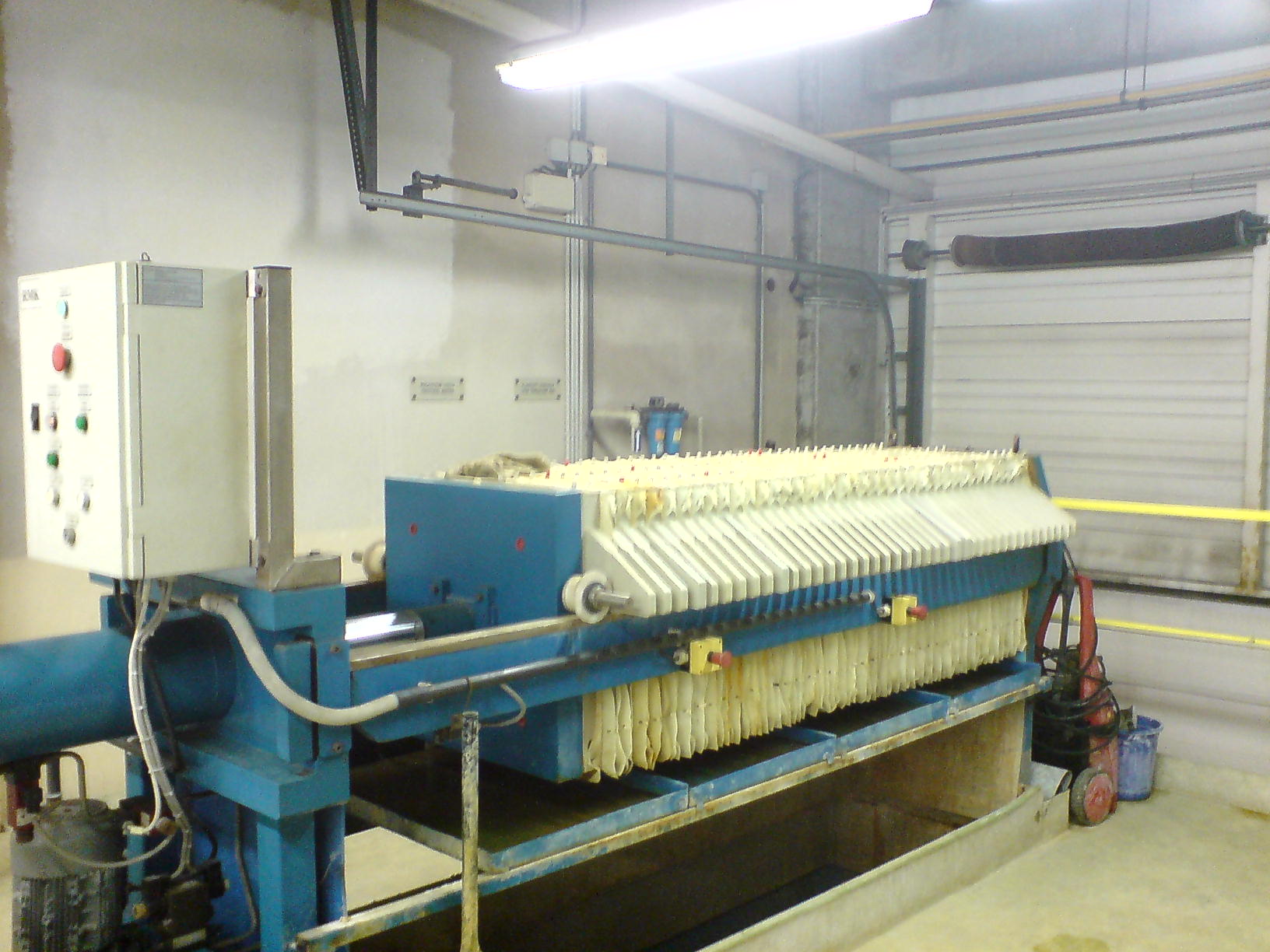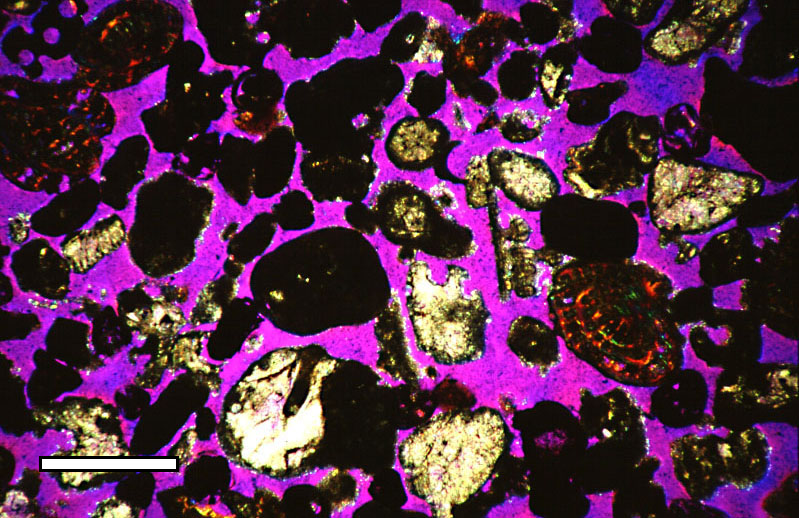|
Dewatering
Dewatering is the removal of water from a location. This may be done by wet classification, centrifugation, filtration, or similar solid-liquid separation processes, such as removal of residual liquid from a filter cake by a filter press as part of various industrial processes. Construction dewatering, unwatering, or water control are common terms used to describe removal or draining groundwater or surface water from a riverbed, construction site, caisson, or mine shaft, by pumping or evaporation. On a construction site, this dewatering may be implemented before subsurface excavation for foundations, shoring, or cellar space to lower the water table. This frequently involves the use of submersible "dewatering" pumps, centrifugal ("trash") pumps, eductors, or application of vacuum to well points. The international business research company Visiongain valued the global dewatering pump market at $6.4 billion in 2018. Processes Deep wells A deep well typically consists of ... [...More Info...] [...Related Items...] OR: [Wikipedia] [Google] [Baidu] |
Filter Press
An industrial filter press is a tool used in separation processes, specifically to separate solids and liquids. The machine stacks many filter elements and allows the filter to be easily opened to remove the filtered solids, and allows easy cleaning or replacement of the filter media. Filter presses cannot be operated in a continuous process but can offer very high performance, particularly when low residual liquid in the solid is desired. Among other uses, filter presses are utilised in marble factories in order to separate water from mud in order to reuse the water during the marble cutting process. Concept behind filter press technology Generally, the slurry that will be separated is injected into the centre of the press and each chamber of the press is filled. Optimal filling time will ensure the last chamber of the press is loaded before the mud in the first chamber begins to cake. As the chambers fill, pressure inside the system will increase due to the formation of thick sl ... [...More Info...] [...Related Items...] OR: [Wikipedia] [Google] [Baidu] |
Watertable Control
In geotechnical engineering, watertable control is the practice of controlling the height of the water table by drainage. Its main applications are in agricultural land (to improve the crop yield using agricultural drainage systems) and in cities to manage the extensive underground infrastructure that includes the foundations of large buildings, underground transit systems, and extensive utilities (water supply networks, sewerage, storm drains, and underground electrical grids). Description and definitions Subsurface land drainage aims at controlling the water table of the groundwater in originally waterlogged land at a depth acceptable for the purpose for which the land is used. The depth of the water table with drainage is ''greater'' than without. Purpose In agricultural land drainage, the purpose of water table control is to establish a depth of the water table (Figure 1) that no longer interferes negatively with the necessary farm operations and crop yields (Figure 2 ... [...More Info...] [...Related Items...] OR: [Wikipedia] [Google] [Baidu] |
Centrifugation
Centrifugation is a mechanical process which involves the use of the centrifugal force to separate particles from a solution according to their size, shape, density, medium viscosity and rotor speed. The denser components of the mixture migrate away from the axis of the centrifuge, while the less dense components of the mixture migrate towards the axis. Chemists and biologists may increase the effective gravitational force of the test tube so that the precipitate (pellet) will travel quickly and fully to the bottom of the tube. The remaining liquid that lies above the precipitate is called a supernatant or supernate. There is a correlation between the size and density of a particle and the rate that the particle separates from a heterogeneous mixture, when the only force applied is that of gravity. The larger the size and the larger the density of the particles, the faster they separate from the mixture. By applying a larger effective gravitational force to the mixture, like ... [...More Info...] [...Related Items...] OR: [Wikipedia] [Google] [Baidu] |
Pore Space
Porosity or void fraction is a measure of the void (i.e. "empty") spaces in a material, and is a fraction of the volume of voids over the total volume, between 0 and 1, or as a percentage between 0% and 100%. Strictly speaking, some tests measure the "accessible void", the total amount of void space accessible from the surface (cf. closed-cell foam). There are many ways to test porosity in a substance or part, such as industrial CT scanning. The term porosity is used in multiple fields including pharmaceutics, ceramics, metallurgy, materials, manufacturing, petrophysics, hydrology, earth sciences, soil mechanics, rock mechanics, and engineering. Void fraction in two-phase flow In gas-liquid two-phase flow, the void fraction is defined as the fraction of the flow-channel volume that is occupied by the gas phase or, alternatively, as the fraction of the cross-sectional area of the channel that is occupied by the gas phase. Void fraction usually varies from location to location ... [...More Info...] [...Related Items...] OR: [Wikipedia] [Google] [Baidu] |
Geotechnical Engineering
Geotechnical engineering, also known as geotechnics, is the branch of civil engineering concerned with the engineering behavior of earth materials. It uses the principles of soil mechanics and rock mechanics to solve its engineering problems. It also relies on knowledge of geology, hydrology, geophysics, and other related sciences. Geotechnical engineering has applications in military engineering, mining engineering, petroleum engineering, coastal engineering, and offshore construction. The fields of geotechnical engineering and engineering geology have overlapping knowledge areas. However, while geotechnical engineering is a specialty of civil engineering, engineering geology is a specialty of geology. History Humans have historically used soil as a material for flood control, irrigation purposes, burial sites, building foundations, and construction materials for buildings. Dykes, dams, and canals dating back to at least 2000 BCE—found in parts of ancient Egypt, ancient Mes ... [...More Info...] [...Related Items...] OR: [Wikipedia] [Google] [Baidu] |
Wastewater Treatment
Wastewater treatment is a process which removes and eliminates contaminants from wastewater. It thus converts it into an effluent that can be returned to the water cycle. Once back in the water cycle, the effluent creates an acceptable impact on the environment. It is also possible to reuse it. This process is called Reclaimed water, water reclamation. The treatment process takes place in a wastewater treatment plant. There are several kinds of wastewater which are treated at the appropriate type of wastewater treatment plant. For domestic wastewater the treatment plant is called a Sewage Treatment. Municipal wastewater or sewage are other names for domestic wastewater. For industrial wastewater, treatment takes place in a separate Industrial wastewater treatment, or in a sewage treatment plant. In the latter case it usually follows pre-treatment. Further types of wastewater treatment plants include Agricultural wastewater treatment and leachate treatment plants. One common proce ... [...More Info...] [...Related Items...] OR: [Wikipedia] [Google] [Baidu] |
Ejector Wells
A vacuum ejector, or simply ejector, or aspirator, is a type of vacuum pump, which produces vacuum by means of the Venturi effect. In an ejector, a working fluid (liquid or gaseous) flows through a jet nozzle into a tube that first narrows and then expands in cross-sectional area. The fluid leaving the jet is flowing at a high velocity which due to Bernoulli's principle results in it having low pressure, thus generating a vacuum. The outer tube then narrows into a mixing section where the high velocity working fluid mixes with the fluid that is drawn in by the vacuum, imparting enough velocity for it to be ejected, the tube then typically expands in order to decrease the velocity of the ejected stream, allowing the pressure to smoothly increase to the external pressure. The strength of the vacuum produced depends on the velocity and shape of the fluid jet and the shape of the constriction and mixing sections, but if a liquid is used as the working fluid, the strength of the vac ... [...More Info...] [...Related Items...] OR: [Wikipedia] [Google] [Baidu] |
Permeability (earth Sciences)
In fluid mechanics, materials science and Earth sciences, the permeability of porous media (often, a rock or soil) is a measure of the ability for fluids (gas or liquid) to flow through the media; it is commonly symbolized as ''k''. Fluids can more easily flow through a material with high permeability than one with low permeability. The permeability of a medium is related to the '' porosity'', but also to the shapes of the pores in the medium and their level of connectedness. Fluid flows can also be influenced in different lithological settings by brittle deformation of rocks in fault zones; the mechanisms by which this occurs are the subject of fault zone hydrogeology. Permeability is also affected by the pressure inside a material. The SI unit for permeability is the square metre (m2). A practical unit for permeability is the '' darcy'' (d), or more commonly the ''millidarcy'' (md) The name honors the French Engineer Henry Darcy who first described the flow of wat ... [...More Info...] [...Related Items...] OR: [Wikipedia] [Google] [Baidu] |
Pore Pressure
Pore water pressure (sometimes abbreviated to pwp) refers to the pressure of groundwater held within a soil or rock, in gaps between particles ( pores). Pore water pressures below the phreatic level of the groundwater are measured with piezometers. The vertical pore water pressure distribution in aquifers can generally be assumed to be close to hydrostatic. In the unsaturated ("vadose") zone, the pore pressure is determined by capillarity and is also referred to as tension, suction, or matric pressure. Pore water pressures under unsaturated conditions are measured with tensiometers, which operate by allowing the pore water to come into equilibrium with a reference pressure indicator through a permeable ceramic cup placed in contact with the soil. Pore water pressure is vital in calculating the stress state in the ground soil mechanics, from Terzaghi's expression for the effective stress of the soil. General principles Pressure develops due to: *''Water elevation differen ... [...More Info...] [...Related Items...] OR: [Wikipedia] [Google] [Baidu] |
Cofferdam Olmsted Locks Ohio River
A cofferdam is an enclosure built within a body of water to allow the enclosed area to be pumped out or drained. This pumping creates a dry working environment so that the work can be carried out safely. Cofferdams are commonly used for construction or repair of permanent dams, oil platforms, bridge piers, etc., built within water. These cofferdams are usually welded steel structures, with components consisting of sheet piles, wales, and cross braces. Such structures are usually dismantled after the construction work is completed. The origin of the word comes from ''coffer'' (originally from Latin meaning 'basket') and ''dam'' from Proto-Germanic meaning 'barrier across a stream of water to obstruct its flow and raise its level'). The term is also used in naval architecture, to refer to a space between two watertight bulkheads or decks within a ship. Uses For dam construction, two cofferdams are usually built, one upstream and one downstream of the proposed dam, afte ... [...More Info...] [...Related Items...] OR: [Wikipedia] [Google] [Baidu] |







